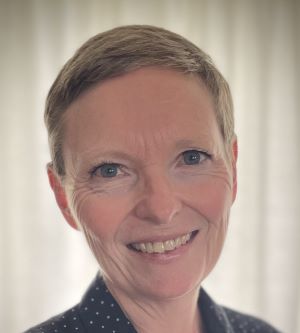Art can have a transformative effect on mental health and wellbeing by providing hope both for the creator of the art and the person experiencing it. Linda Bryant discusses this healing effect and calls for an evolution of art in hospitals.

Comment spotlight
Are you an RSA Fellow? Submit your original article to Circle and it could be featured as the next Comment spotlight.
This Comment is part of our Spotlight series highlighting the most engaging articles submitted to the Comment space on Circle from Fellows. If you have an article you would like to share with the Fellowship, click the link to upload it now.
We all experience dark nights of the soul. For some people, those nights are frequent and very dark. If we are fortunate, we will have loving and kind relationships around us that lift us up and help us to move into the light. For others, the circumstances of their lives and the challenges they face have left them isolated and unable to find a path that helps them navigate to a better place of mental wellbeing and fulfilment.
There is always hope, however. Hope comes in many guises, and art, in all its forms, is perhaps one of the most powerful, energising and dynamic sources. Art has the ability to transcend the darkness and lighten our emotional burdens, whether it’s a favourite painting, beautiful cadences of the spoken word or a chorus of a song that picks you up from a chair and dances you around a room.
We know a lot about what works for people struggling with their experiences of mental distress. Arts therapies and the arts in health can offer a broad range of accessible, creative and engaging approaches that can aid mental health-related wellbeing. While arts therapy has been gaining in popularity in mental health settings over the last few years due to its individualised focus on the emotional, spiritual and social, there is little ‘real’ research evidence of its efficacy
You may find that surprising given your own wellbeing experiences of the arts. But perhaps the worlds of our mind, our thoughts, our feelings, our emotional lives, cannot always be examined, analysed and quantified. And perhaps sometimes we have to give just a nod to ‘hard’ science and to look to the narratives and journeys of people who have found agency and hope in their experiences of art.
Art has the ability to lighten our emotional burdens, whether it’s a favourite painting, beautiful cadences of the spoken word or a chorus of a song that picks you up from a chair and dances you around a room.
Transformative art
To celebrate and promote the arts as that powerful enabler of wellbeing, Together for Mental Wellbeing, the organisation I have the privilege to lead, held a recent lecture event in the name of our founder, the Reverend Henry Hawkins (if you need to be encouraged that we can view the past with hope, then look him up here). As a partnership with the Guildhall School of Music & Drama, we reflected on how art can have a transformative and healing impact, through formal therapy, music, the spoken word and by building cultural environments as places of sanctuary.
Dr Simon Hackett, Senior Clinical Lecturer in Mental Health at Newcastle University, used his session at the event to present the clinical case for arts-based psychological therapies, arts psychotherapies (art/drama/music/dance-movement) and arts in health, to improve mental health and wellbeing outcomes. He also picked up the research baton, describing a new study that is bringing together a unique collaboration of art psychotherapists and researchers to explore the value of interpersonal art psychotherapy for people living with learning difficulties.
If art is a guarantee of sanity, what a revolution could be achieved in the wellbeing of people needing the support of mental health care facilities if they are designed with an art school at their very centre.
Outsider art
Art as a form of hope is beautifully and wondrously exemplified through the incredible Living Museum Society,the work of which was discussed at the event by Angela Samata, an arts and mental health consultant, BAFTA-nominated television presenter and TEDx talker. According to her speech, art is the ‘highest form of hope’.
Angela was a successful recipient of a Churchill Fellowship by the Winston Churchill Memorial Fund and focused her research on the concept of ‘Outsider Art’, which she defined in her findings report as ‘artwork produced by those who are untrained and facing a mental health or physical health challenge which may or may not require supported care’.
Angela’s fascinating exploration of the clinical and therapeutic implications of Outsider Art used the work of the Living Museum Society as a case study of bringing art schools into the very centre of psychiatric institutions. Represented in over 20 countries, the Living Museums movement seeks to promote the healing aspects of the arts and sees: ‘Art as therapy. Art is a guarantee of sanity. The change of identity from being one who is mentally ill to being an artist is the most important aspect of healing. Art making leads to the reduction of stress and anxiety. And in many cases even to catharsis. Hope arises from the process.’
If art is a guarantee of sanity, what a revolution could be achieved in the wellbeing of people needing the support of mental health care facilities if they are designed with an art school at their very centre. But with public sector finances under so much pressure, perhaps the more realistic call is to plan for an evolution of art in our hospitals rather than a revolution and to look closer to home for inspiration, which I found recently when I visited one of Together’s services in Sheffield.
This service provides accommodation, care and support to people experiencing mental distress. On my visit, I was told of a new art workshop that had been established by people living at the service, inspired by our lecture event. The workshops are bringing people together to create paintings, pottery, sculptures and other forms of art. As one person told me: “I don’t need to talk. I put my feelings into the paintings. They may not make sense to anyone else but they make sense to me.”
Linda Bryant is the Chief Executive of Together for Mental Wellbeing, which is working to ensure that everyone who experiences mental distress can live the life they choose, determine their own futures and be empowered to lead their own journey to wellbeing.
Read past Journal and Comment articles
-
Why the UK needs a House of Campaigns
Comment
Richard Ellis
Parliament is based on political parties, but most of us approach politics through the particular issues that we care about. We should open up Parliament by giving campaigning groups a bespoke presence in the heart of our democracy.
-
Earth Day: why it needs to be every day
Comment
Phillip Ward
This year’s Earth Day focuses on plastic pollution. It’s a massive problem that must be addressed, but we need to go beyond one-day initiatives to instil a sense of urgency in responding to all the issues we face.
-
Making the most of your late career
Comment
Ann Thorpe
How do you harness your potential in the last chapter of your career? Ann Thorpe explains how the Late Career Alliance could help to craft your career narrative, impact and legacy.




Be the first to write a comment
Comments
Please login to post a comment or reply
Don't have an account? Click here to register.